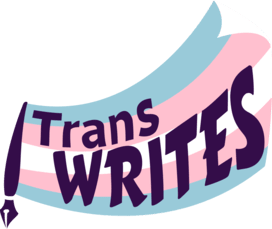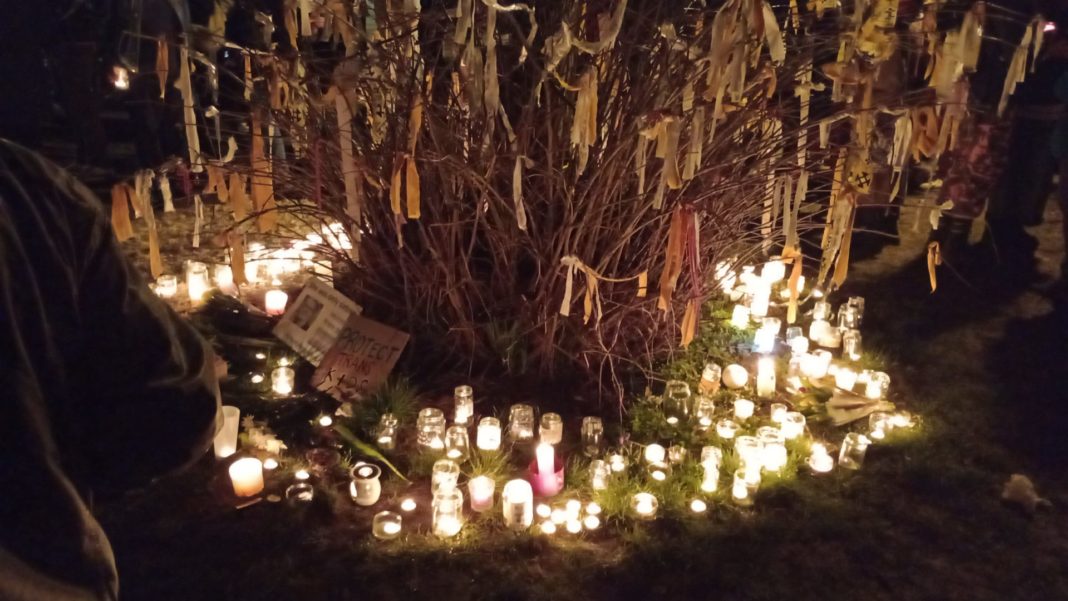Like many trans people recently, researchers at Trans Safety Network have joined with our communities to attend, speak at, and help organise vigils so that we can mark the death of Brianna Ghey, a 16-year-old trans girl from Warrington. The question we hope to answer in this letter is a difficult one – what is a vigil?
We have seen many vigils take place recently, all across the country. In its simplest terms, a vigil is an event, and one which the trans community has had to put their energy into organising. There is a lot of admin involved.
What is a vigil? Where are we going to find a sound system? Can we find a BSL interpreter at this short notice? Can we print flyers with information for mental health first aid, given the traumatic experience of knowing that a teenage girl died, afraid and in pain, in this country, only this past weekend? These flyers are also made necessary by the very vivid and traumatic experiences many of us have had with serious transphobic violence, that an incident like this resurfaces. How do we vet speakers to make sure that it doesn’t get hijacked by cisgender-run organisations trying to sell papers and recruit support for political parties which have never done us any good? Can we arrange security to protect us from anti-trans protesters who turn up to taunt us at every single event? The police will not keep us safe.
How do we find out what Brianna Ghey’s family think? What her friends think? How do we remain sensitive to her loved ones, with all the uncertainty that comes with a sudden death yet to be fully investigated? How do we balance trying to find out their wishes, with the gross invasion of their privacy by the right-wing media who have already gone door to door throughout her community trying to find her name before transition? How do we do the necessary care that is a part of creating a safe space for all the grief everyone is feeling?
What is a vigil?
Because, first and foremost, a vigil is about grief. Our collective grief, for Brianna, a child, a young woman, who was taken from the trans community – our community – before she even had a chance to go out and explore the world fully, on her own terms. However, the trans community, and Brianna’s loved ones, have not been given the space to grieve.
As an organisation, at Trans Safety Network we have been dealing with a battery of questions about the killing, often coming from the very same news outlets who have for years been calling us rapists and a violent threat to women, and a contagious mental illness that young girls need to be protected from.
They want to know what we think about the fact that the Home Office has decided to misgender Brianna on various documentation — an insult to her memory, but one that pales in comparison to the injustice of the wounds that ended her. A conversation that we should not be having, and would not be having, if only such people viewed Brianna as a human being. What do we think about her death certificate? It will be written far too soon. She should have had a long, happy life. She should be with her family. I wish, more than anything, that most of us had never heard her name.
The pettiness and cruelty of all this – is central. The drain on our grieving community by institutions which routinely perform their contempt for us, while we work hard to make her short life and the suffering that ended it mean something, is profitable for them. In a transphobic society, trans death creates a value that trans lives do not hold.
When our deaths are political, when we are killed within a society which is organised towards our extinction – then our vigils must be political too. They must be a protest, they must be filled by the rage we rightly feel. Whatever the specific circumstances leading to her death, we are currently living through a period of unprecedented moral repugnance towards trans people, promoted and enabled by the apathy and complicity of powerful public figures.
Trans social death happens not just at the point of the knife entering the body or the people holding it. It happens through the arm that wields it, in the cisgender media that reviles us, in educational diversity and inclusion policies which in many schools have been gutted of their meagre protections for trans youth to access something as basic as toilets, by lobbying from hate groups like Transgender Trend, Sex Matters and Genspect.
The Times retroactively changing their article on her death to remove reference to her as a ‘girl’ and to add her deadname, until the outcry in response forced them to u-turn.
The Telegraph asking us for comment on the same day they gave column inches in an article about her death to Harry Miller – a relentless anti-trans activist – to say that this was the ‘tragic death of a young man’, and that it should be recorded as such. Harry Miller is a founder of ‘Fair Cop’, a group which believes that politics – including any support for Pride – should be removed from the police. Just last month, Fair Cop helped a far right activist resist police investigation for transphobic and homophobic hate. Miller also began the hashtag #SayYesToHate on the eve of the Trans Day of Remembrance 2020. The Telegraph’s article somehow neglected to mention Miller’s long record of pro-hate activism.
Culture war vultures in the Home Office like Suella Braverman who will doubtless find a way to spin the immediate victory of a trans child’s death into fresh meat for the right wing electoral base. Meanwhile, Keir Starmer says nothing, in the hope of winning more transphobic votes in the next election.
Metaphorically, and in the sense that it is what puts food on some of their tables, they are killing and feasting on us.
And through this all we are trying to mourn. To show that we value her life, and that her passing brings us deep pain and sadness – because it does. Because Brianna Ghey was a human being and she did not deserve this and that’s the only point that matters.
What is a vigil? It is something that should never have happened. The death of Brianna Ghey is a failure by our society at the deepest level. It should not take a vigil, a public show of grief, to value the lives of trans children. Brianna’s life should have been valued enough not to be taken in the first place.















